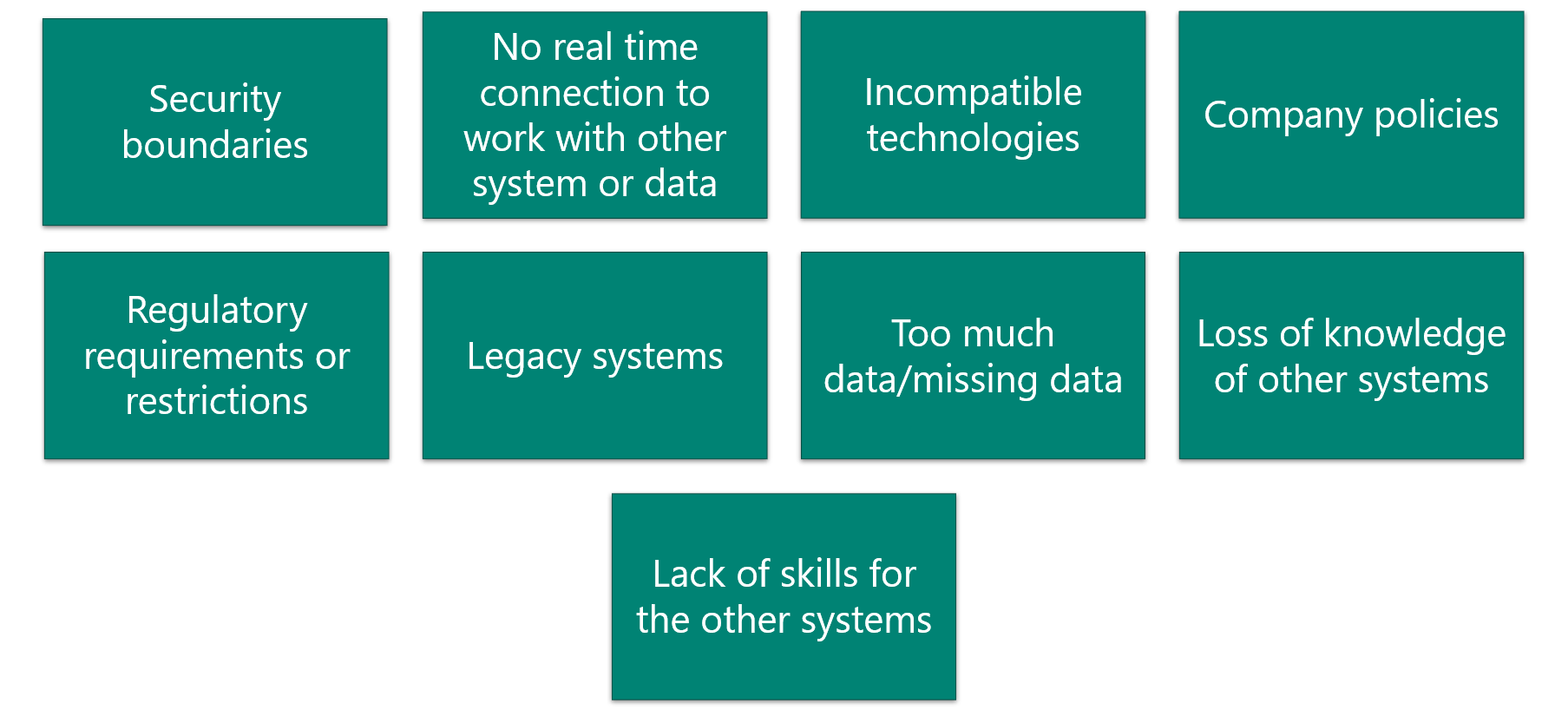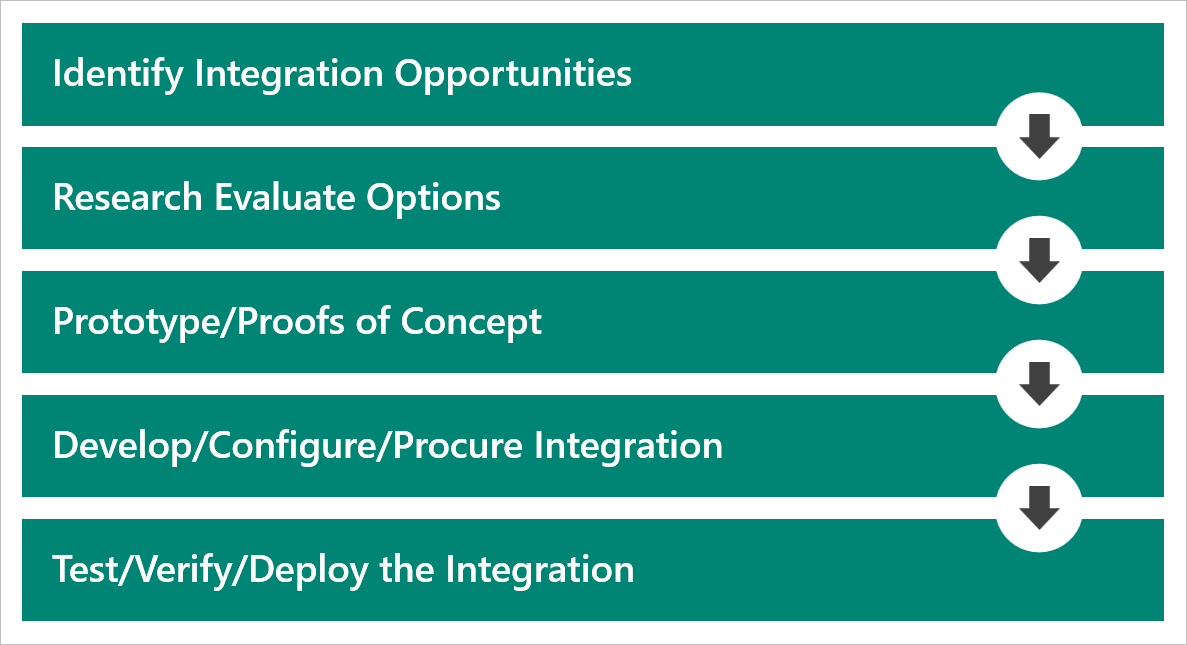Integration challenges
Integration projects can be costly, complex, and difficult to maintain if not carefully designed.
Common challenges
The following diagram shows common integration challenges that a solution architect might encounter:

Solution architects must design integrations that are resilient and flexible to support future changes without introducing fragility.
Influencers
The following factors influence integration design decisions:
- Volume of data being moved or accessed
- Quality of source data
- Latency in accessing or working with external systems
- Security and compliance requirements
- System reliability expectations
- Risks associated with data or functionality duplication
- Alignment with Microsoft Power Platform capabilities
- Project cost, timeline, and available resources
- Organizational structure and internal politics
Causes of failure
Many integration issues arise from the following common causes:
- Underestimating complexity – Failure to assess technical and operational dependencies.
- Poor user experience – Integrations that disrupt user workflows or lack consistency.
- Tightly coupled components – High cohesion can create fragile systems.
- Lack of platform knowledge – Not understanding Microsoft Power Platform or external system capabilities.
- Low-quality source data – Duplicates, missing values, or inconsistent structures.
- Ambiguous system of record – Uncertainty about data ownership and authority.
- Poor coordination – Multiple stakeholders implementing disconnected solutions.
- Unfamiliar integration partners – External teams lacking Power Platform experience.
Design for resilience
Solution architects need to ensure that integrations are designed to be resilient:
- Anticipate and plan for transient failures.
- Use escalating retry logic and the circuit breaker pattern to gracefully handle issues.
- Implement queuing or loosely coupled designs to improve reliability.
- Define clear strategies for handling expected failure scenarios.
Integration design process
Every integration project presents unique challenges. While learning specific technologies is helpful, developing the skills to evaluate integration needs and constraints is more valuable in real-world projects. The following diagram shows the integration design process:

Integration design involves trade-offs, and there's rarely a single right answer. Solution architects should evaluate the team's technical skills and the breadth of available Microsoft Power Platform capabilities.

In some scenarios, hiring staff or adjusting processes may be more cost-effective than building a technical integration. Consider whether real-time integration is necessary or if an alternative approach can meet the business need.
Important
Consider using Power Automate desktop flows for user interface-level integrations where API-based solutions aren't available.
Data integration
When evaluating integrations, solution architects should categorize data using the following dimensions:
- Volatility – Is the data highly dynamic or frequently updated?
- Volume – What is the size of the dataset involved?
- Time sensitivity – Does the data need to be accessed or synchronized in real-time?
- Batch requirements – Can the data be processed in batches or must it be transactional?
- Regulatory constraints – Does the data include personal or sensitive information with storage restrictions?
- Licensing limitations – Is the data licensed, and are there usage or distribution constraints?